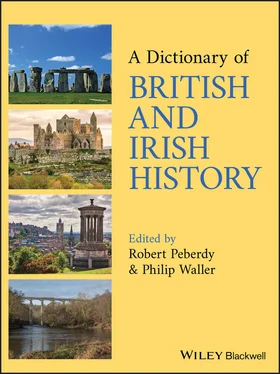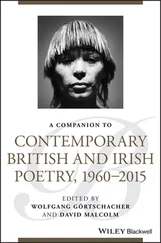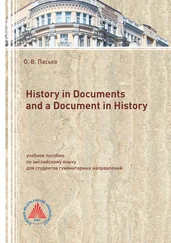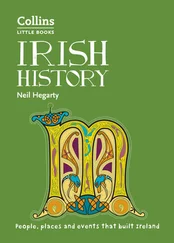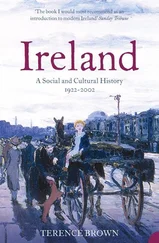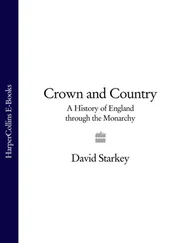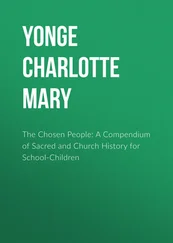(b. in Normandy; d. 1226 at Rome, Italy). Of obscure origin, de Bréauté was in the service of King JOHN in England by 1207. During John’s conflict with rebel barons in 1215–16, he was a commander of royalist forces ( see MAGNA CARTA), and was rewarded with marriage to an earl’s widow, thereby gaining extensive estates.
After the accession of HENRY III, de Bréauté helped to defeat French and baronial forces at Lincoln (May 1217; see ENGLAND, FRENCH INVASION (1216–17)), and he remained a leading government officer. But in Dec. 1223, having made enemies, he agreed to resign his sheriffdoms and castles though he resisted loss of his estates. Having submitted to Henry (19 Aug. 1224), he went into overseas exile (Oct.).
BREDA, DECLARATION OFThe statement issued at Breda in the Dutch Republic on 4 April 1660 by CHARLES II, exiled king of England, Ireland and Scotland. Prepared at the suggestion of General MONCK, it was issued during elections in England and Wales to the CONVENTION PARLIAMENT. Charles, who was seeking to regain his thrones, promised conditional pardons to former enemies, settlement of pay arrears for the Army, that Parliament could resolve disputed land titles, and advocated religious liberty. The Declaration was read in Parliament on 1 May and encouraged the RESTORATION. See also CLARENDON, EARL OF. BREHONsee BREHON LAW BREHON LAW
Term used for Old Irish laws, which were written down from the 8th century in such tracts as Senchas Már (OIr., meaning ‘Great Tradition’); derived from OIr. brithem (‘brehon’ in English), meaning ‘judge’ or ‘jurist’. Law making and justice were usually the preserve of the brithemain , who comprised one of the LEARNED CLASSES. Although kings were not lawgivers, they could issue emergency provisions.
Ireland in effect lacked a concept of criminal law. All felonies and misdemeanours were civil offences. While certain laws dealt with such crimes as murder, assault and theft, they were concerned with the provision of compensation for a victim and his kin rather than punishment of criminals. Various tracts dealt with land, contracts and pledges, personal injuries, SOCIAL STRUCTURE, and FAMILY AND KINSHIP (including related obligations such as fosterage and marriage).
Although society was generally patriarchal, the laws accorded women considerable status. Women could not normally give legal witness, and could inherit only a life‐interest in property, but they had rights in marriage and divorce based on the property they had contributed to a marriage. Women were jointly responsible with their husbands for rearing children.
Despite reinterpretations, brehon law survived in Gaelic Irish areas, particularly ULSTER (N Ireland), until the end of the ‘Gaelic era’ (early 17th century). In 1920–2 revolutionary courts run by SINN FÉIN admitted citations from ‘early Irish law‐codes’, but the IRISH FREE STATE (founded 1922) in principle followed the English legal system.
BRÉIFNE
A kingdom in NW Ireland, between CONNACHT (W Ireland) and AIRGIALLA (N Ireland), created in the late 8th century by the Uí Briúin Bréifne dynasty from Connacht. By the 10th century they had expanded south‐eastwards (modern Co. Cavan); in the 12th century they governed part of MEATH (E Ireland). By then, their ruling family had adopted the surname Ua Ruairc (English, O'Rourke).
After the death of Tigernán Ua Ruairc (1172), the dynasty's power collapsed and Meath was taken by Anglo‐Normans ( see LACY, HUGH DE). The remainder of Bréifne remained outside direct Anglo‐Norman control, but by the mid 13th century broke into two: W Bréifne (modern Co. Leitrim) under the O'Rourkes, E Bréifne (modern Co. Cavan) under the O'Reillys (Irish, Ó Ragallaig). Both dynasties survived until the late 16th century. Brian O'Rourke was hanged by the English in 1591 and his kingdom was later included in the ULSTER PLANTATION. See also MAC MURCHADA, DIARMAIT.
BRÉTIGNY, TREATY OFConcluded on 8 May 1360 at Brétigny (N France), between English and French representatives, ending the first phase of the HUNDRED YEARS WAR. The ransom for releasing King John II of France from English custody was reduced. John would cede lands and sovereignty in SW and N France, including the duchy of Aquitaine and CALAIS, to King EDWARD III of England. Edward would cede Normandy and Touraine, and renounce his claim to the French Crown. It was a poor outcome for Edward given his military dominance. The treaty was replaced (24 Oct.) by the treaty of Calais, which omitted John’s cession of sovereignty and Edward’s renunciation of his claim. See also GASCONY. BRETTON WOODS AGREEMENTSArrangements made in July 1944 by 44 Allied powers, including the UK (represented by J.M. KEYNES), at the United Nations International Monetary and Financial Conference, Bretton Woods, New Hampshire, USA. They created a monetary system, for implementation after WORLD WAR II, designed to provide stability: it involved fixed exchange rates based on the dollar and gold, an International Monetary Fund to provide liquidity, and a World Bank for longer‐term loans. Currency values could be changed only in exceptional circumstances. The pound sterling was devalued from $4.03 to $2.80 (1949), and to $2.40 (1967). The system collapsed from 1971 and currencies ‘floated’ (sterling from 23 June 1972). BREWING INDUSTRY, ENGLAND AND WALES
Ale‐brewing, with malted barley or oats, was undertaken widely in rural households until the 18th century. In towns, women brewed ale for sale. It was also brewed at alehouses and inns.
Beer‐brewing, using hops for flavouring and preservation, was introduced by German immigrants in the late 14th century. During the 16th and 17th centuries ‘common breweries’ (businesses usually run by men which sold to inns and individuals) were founded in towns, but LONDON remained the major centre until the 19th century. Around 1700 it produced a quarter of England’s beer, though there were prominent businesses elsewhere (e.g., Burton‐on‐Trent, Staffordshire, with high‐quality water). London brewers used coal instead of wood for heating from the 16th century, and coke from the mid 17th century.
In 1722 ‘porter’ (strong, dark beer) was invented near London. It was suitable for large‐scale production and kept well. For over 50 years several London breweries were the largest industrial businesses (e.g., Whitbread’s). From the 1820s ‘pale ale’ beer was popular and widely exported (e.g., to India).
The spread of RAILWAYS from the 1830s increased marketing areas. Brewing expanded notably at Burton‐on‐Trent (26 breweries by 1869). Specializing in ‘pale ale’, its production surpassed that of London. Brewing by retailers and public houses declined rapidly. In Wales, brewing expanded in industrial areas from the 1830s.
In the 20th century commercial breweries in England and Wales declined from over 3000 in 1900 to under 200 in 1980, with many Welsh brewers being absorbed by English companies. But a ‘Campaign for Real Ale’ later encouraged a growth of ‘microbreweries’ serving small areas.
BREWING INDUSTRY, IRELAND
Ale was widely brewed in rural households until at least the 17th century, when commercial beer‐brewing became established, using imported hops. Most breweries (probably over 1000 in 1700) were small and produced for direct retail sale. Large‐scale production was concentrated in DUBLIN.
By the 1770s breweries faced strong English competition. (Beer imports rose from 15,000 barrels in 1750 to 100,000 in 1792.) Some responded by expanding output, and by 1814 exports exceeded imports, though breweries declined (937 in 1790 to 247 in 1837).
Читать дальше
